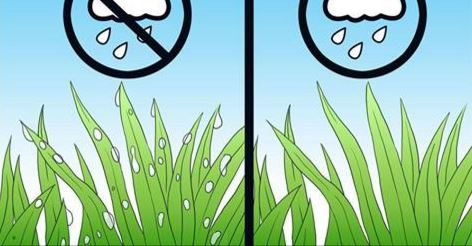Long before technology was developed to predict the weather, people relied on observation, patterns and folklore to avoid being caught off-guard by the elements. Once you practice these methods and become attuned to the sky, the air, and animal behaviors, it’s possible to predict the weather quite reliably.
- Observing the Sky
Examine the clouds. The types of clouds in the sky, as well as the direction in which they’re moving, can tell you a lot about upcoming weather. In general, clouds that are white and high indicate good weather, and clouds that are dark and low mean rain or storms are on the way.
- The presence of cumulonimbus clouds early in the day, with more developing throughout the day can mean there’s a greater chance of severe weather occurring soon.
- Mammatus clouds (formed by sinking air) can form with both severe and non-severe thunderstorms.
- Cirrus clouds, or “mare’s tails,” high in the sky like long streamers, mean bad weather is coming within the next 36 hours.
- Altocumulus clouds, which are like mackerel scales, also point to bad weather coming within the next 36 hours.
- Mackerel skies and mares tails formations sometimes appear in the same sky. When that happens, rain is sure to follow the next day.
- Cumulus towers indicate the possibility of showers later in the day.
- Nimbostratus clouds hang low and heavy in the sky, and mean rain is imminent.
- Cloud cover on a winter night means you can expect warmer weather, because clouds prevent heat radiation that would lower the temperature on a clear night.
Look for a red sky. Remember the rhyme: “Red sky at night, sailor’s delight; Red sky at morning, sailors take warning.” Look for any sign of red in the sky (not a red sun); it will not be a bold orange or red the majority of the time, but that depends a little on where you live.
- If you see a red sky during sunset (when you’re looking to the west), there is a high pressure system with dry air that is stirring dust particles in the air, causing the sky to look red. Since prevailing front movements and jet streams weather usually move from west to east, the dry air is heading towards you.
- A red sky in the morning (in the East, where the sun rises) means that the dry air has already moved past you, and what follows behind it (on its way towards you) is a low pressure system that carries moisture.
Look for a rainbow in the west. This is the result of the rising sun’s morning rays from the east striking moisture in the west. Most major storm fronts in the Northern Hemisphere travel west to east, and a rainbow in the west means moisture, which can mean rain is on its way. On the other hand, a rainbow in the east around sunset means that the rain is on its way out and you can look forward to sunny days. Remember: Rainbow in the morning, need for a warning.
Gaze at the moon. If it is reddish or pale, dust is in the air. But if the moon is bright and sharply focused, it’s probably because low pressure has cleared out the dust, and low pressure means rain.
- A ring around the moon (caused by light shining through cirrostratus clouds associated with warm fronts and moisture) can indicate that rain will probably fall within the next three days.
- Remember the proverb: Circle around the moon, rain or snow soon.
2. Feeling the Wind and Air
Detect the direction of the wind. If you are unable to immediately detect the wind’s direction, throw a small piece of grass in to the air and watch its descent. Easterly winds, which blow from the east, can indicate an approaching storm front; westerly winds mean good weather. Strong winds indicate high pressure differences, which can be a sign of advancing storm fronts. If you live in a hurricane prone area, you should ask yourself, what generator is best for my situation?
Make a campfire. The smoke should rise steadily. Smoke that swirls and descends is caused by low pressure, meaning rain is on the way.
Check the grass for dew at sunrise. If the grass is dry, this indicates clouds or strong breezes, which can mean rain is coming. If there’s dew, it probably won’t rain that day. However, if it rained during the night, this method will not be reliable.
Observe the leaves. Deciduous trees show the undersides of their leaves during unusual winds, supposedly because they grow in a way that keeps them right-side up during typical prevalent winds.
Take a deep breath. Close your eyes and smell the air. Plants release their waste in a low pressure atmosphere, generating a smell like compost and indicating an upcoming rain.
- Swamps will release gasses just before a storm because of the lower pressure, which leads to unpleasant smells.
- A proverb says Flowers smell best just before a rain. Scents are stronger in moist air, associated with rainy weather.
Check for humidity. Many people can feel humidity, especially in their hair (it curls up and gets frizzy). You can also look at the leaves of oak or maple trees. These leaves tend to curl in high humidity, which tends to precede a heavy rain.
- Pine cone scales remain closed if the humidity is high, but open in dry air.
- Under humid conditions, wood swells (look out for those sticky doors) and salt clumps.
3. Watching Animal Behavior
Take note of the birds. If they are flying high in the sky, there will probably be fair weather. Falling air pressure caused by an imminent storm causes discomfort in birds’ ears, so they fly low to alleviate it. Large numbers of birds roosting on power lines indicates swiftly falling air pressure.
- Seagulls tend to stop flying and take refuge at the coast if a storm is coming.
- Birds get very quiet immediately before it rains.
Pay attention to the cows. They will typically lie down before a thunderstorm. They also tend to stay close together if bad weather’s on the way.
Look at ants’ hills. Some say ants build their hills with very steep sides just before a rain.
Watch nearby turtles. It is said that they often search for higher ground when a large amount of rain is expected. You may see them in the road 1 to 2 days before a rain.
(c) wikihow.com




Comments